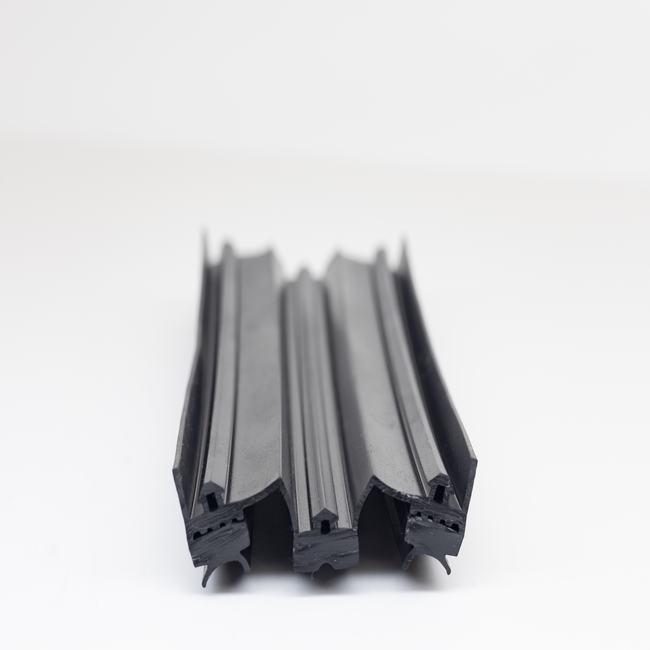Garage door seals, also known as garage door weatherstripping or garage door thresholds, are essential components that provide a barrier against weather elements, pests, dust, and debris from entering your garage. These seals help maintain the temperature and cleanliness of your garage, enhance energy efficiency, and protect your belongings. Here’s more information about garage door seals:
Types of Garage Door Seals:
- Bottom Seal (Door Bottom Weatherstrip): This seal is attached to the bottom of the garage door and creates a seal between the door and the garage floor. It prevents drafts, water, and debris from entering under the door. T-style and bulb-style seals are common designs.
- Side Seals (Jamb Seals): Side seals are installed on the sides of the garage door and seal the gaps between the door panels and the door frame, ensuring a tight fit and preventing drafts.
- Top Seals: These seals are installed at the top of the door and provide additional protection against drafts and weather elements. They can be used in combination with bottom and side seals for comprehensive sealing.
- Threshold Seals: Threshold seals are installed on the garage floor, creating a raised barrier that prevents water and debris from flowing into the garage. They are particularly useful in areas prone to flooding.
Features and Benefits:
- Weather Resistance: Garage door seals are designed to withstand various weather conditions, including rain, snow, wind, and extreme temperatures, keeping your garage interior comfortable and dry.
- Energy Efficiency: Properly installed seals help maintain the temperature inside your garage, which can lead to energy savings, especially if your garage is attached to your home.
- Pest Prevention: Seals help keep pests such as insects, rodents, and small animals out of your garage, protecting your belongings.
- Dust and Debris Control: They block dust, leaves, and debris from entering your garage, helping to keep it clean.
- Noise Reduction: Garage door seals can help reduce noise from the outside, creating a quieter environment inside your garage.
- Protection of Belongings: They help protect your vehicles, tools, and other items stored in the garage from potential damage caused by water or pests.
Installation:
The installation of garage door seals varies depending on the type and design of the seal. Generally, it involves the following steps:
- Clean the Surface: Ensure the surface where the seal will be attached is clean and free from dirt and debris.
- Measure and Cut: Measure the seal to the appropriate length, and if necessary, cut it to fit the width of your garage door.
- Attach the Seal: Using appropriate fasteners, adhesive, or other attachment methods specified in the manufacturer’s instructions, secure the seal in the desired location.
- Test the Seal: Close the garage door to test the seal’s effectiveness. Make adjustments as needed to ensure a proper seal.
Maintenance:
Regularly inspect your garage door seals for wear and tear. Replace them if they become damaged or lose their effectiveness to maintain a secure seal and protection for your garage.
In summary, garage door seals are essential for maintaining the comfort, cleanliness, and energy efficiency of your garage space. They provide protection against weather elements, pests, and debris, making them a valuable addition to any garage door system.










